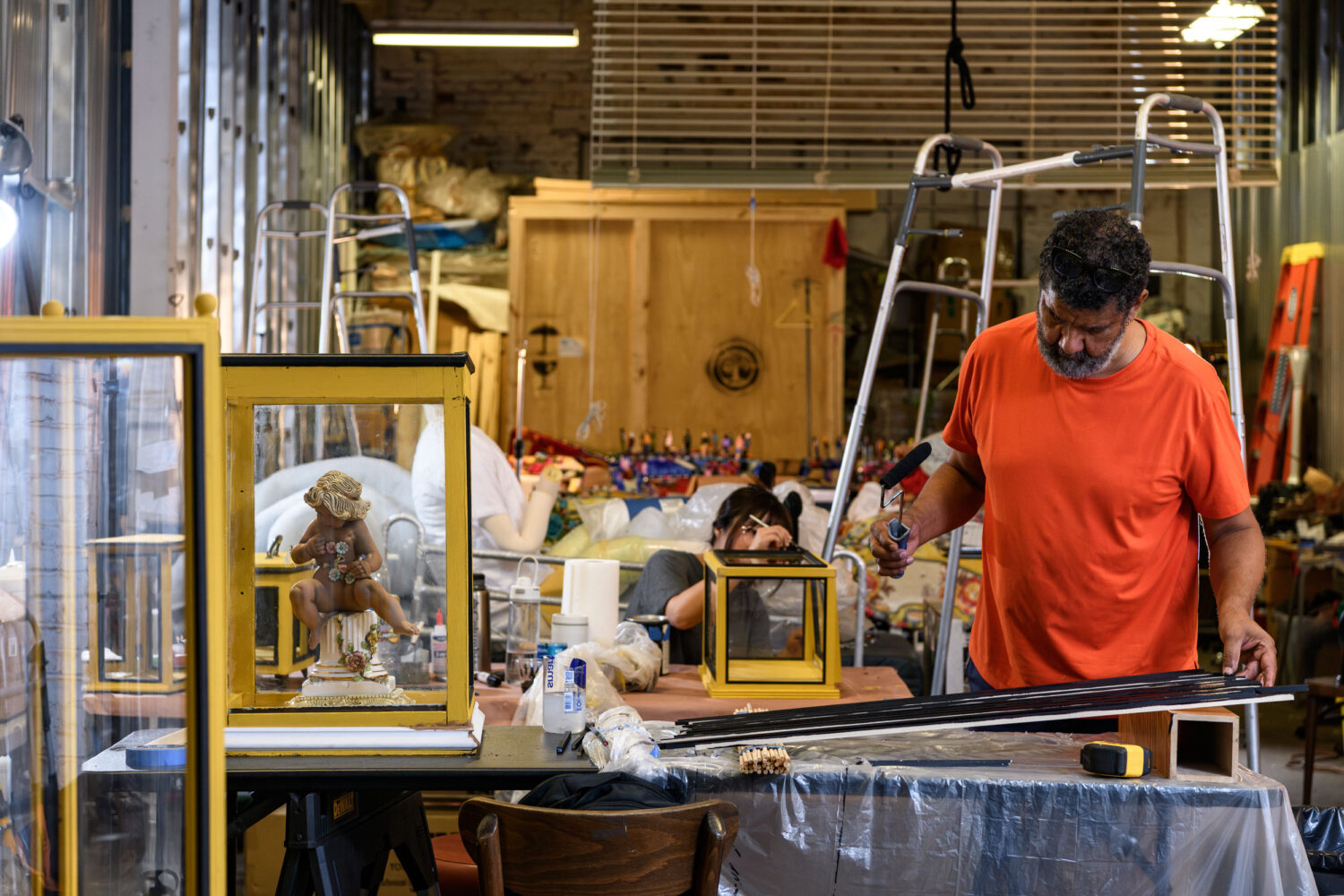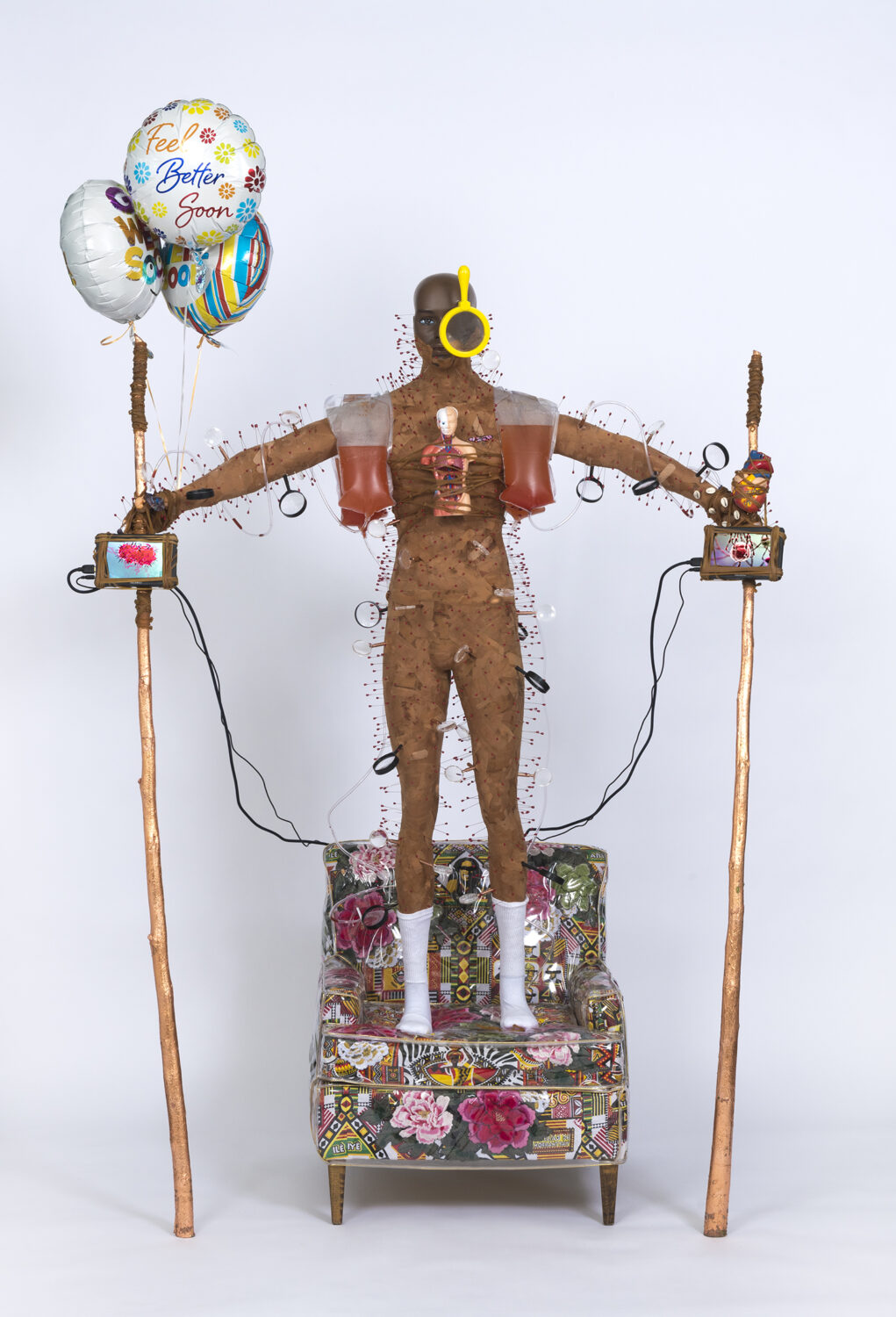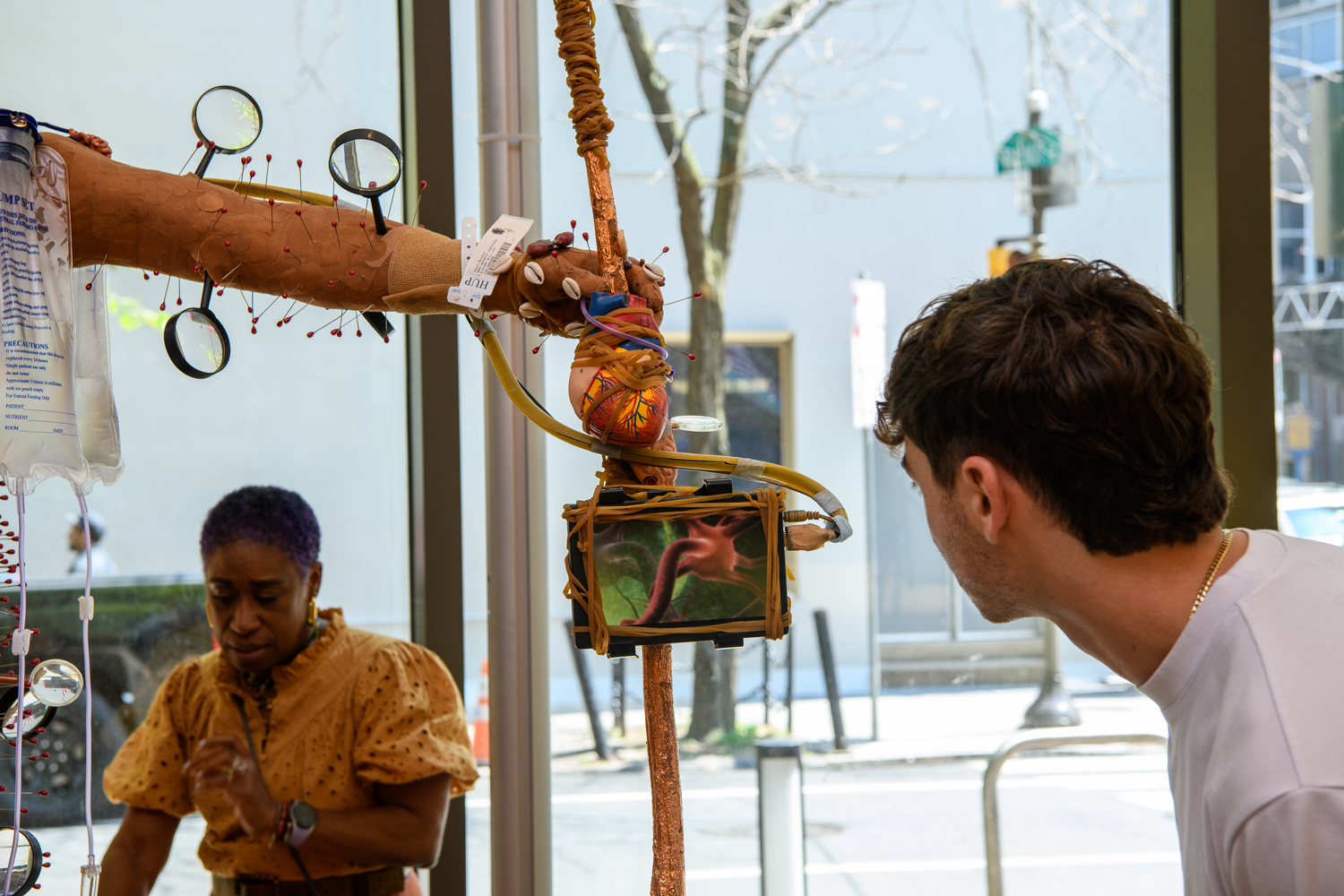Art in “the Belly of the Beast”: Why Pepón Osorio Is Showing Work in Classrooms and Hospitals
By Keshav AnandBorn in San Juan, Puerto Rico, multidisciplinary artist Pepón Osorio moved to the South Bronx in 1975. Informed by his background in theatre and performance as well as his experiences as a child services case worker and professor, he has pioneered a type of artmaking prioritising social engagement. His richly textured sculptures and installations examine political and cultural injustices affecting Latino and working-class communities in the United States. For over 35 years, Osorio has advanced critical conversations surrounding race, gender, and identity as well as structural inequalities in the US healthcare, education, and prison systems.
Building on a new work included in the artist’s New Museum survey that took place last summer, his latest installation, Convalescence, tells the stories of five individuals with life-threatening or chronic illnesses. Drawing on his own experiences as a cancer survivor, Osorio sought to capture the sense of stopped time created by chronic illness and the difficulty of navigating a bureaucratic, often unfeeling healthcare system.

In conversation with Something Curated’s Keshav Anand, Osorio tells: “I have always been interested in engaging with people. It is the nature of my culture and its colonial reality. We look out for each other. Working in the NYC Department of Human Services in the 80’s gave me the illusion that I was helping others and making a difference until I found out that I was part of the problem. The institutionalisation of solutions to a population in need did not fit my vision of resolving problems, and that’s when I turned around and became an artist.”
As is the artist’s long-standing practice, Convalescence did not premiere in a museum or gallery, but on a site deeply related to the issues the work examines. In this case, Osorio has chosen a healthcare facility on the campus of Thomas Jefferson University in Philadelphia — where his work is on view until 1 November 2024, free of charge to patients, students, healthcare professionals, and the public.

The artist expands: “Starting in the 90’s I began to present work in the context of “neighbourhood spaces”. I wanted the installations to be more accessible and relevant to the population that was represented in the work. I wanted to make sure that the work didn’t miss the chance to reach beyond the confines of a conventional exhibition space. For example, my work reForm addressed public school closures, and so I chose to show it in a classroom at Temple University, turning that classroom into a radical exhibition space that denounced the Philadelphia Public School District’s lack of vision and interest in the people it was supposed to serve.
reForm was a five-year, participatory art process through which I worked with former students, teachers, parents, administrators of Fairhill School, which had been closed by the School District, to transform left-behind chalkboards, desks, chairs, and mementos from an empty school into an installation. It was a bold effort to bring awareness to the epidemic of school closing. With Convalescence, I am doing the same. The installation has been made through the same collaborative process as reForm, and for this work addressing inequities in the US healthcare system, I have chosen to present it in the lobby of a medical facility. It’s about showing the work in the belly of the beast.”

Elaborating on the collaborative process involved in making the work, Osorio continues: “We all wanted to tell our stories. Convalescence is born from stories of people (like me) who have faced life threatening illness either themselves or as caregivers, and it is grounded in ideas of social justice. The work exposes blaring contradictions of health systems that disempower the individual’s inherent capacity for healing and reduces one’s chances of survival to a medical formula. Imagine over a few years having conversations with families by comparing notes, sharing personal stories, and building metaphors that later became enlarged in the installation.”
Book recommendation:
The People’s Hospital: Hope and Peril in American Medicine by Ricardo Nuila, a physician and writer who was part of a group of Thinking Partners who collaborated with me on Convalescence.
Feature image: Pepón Osorio at work on Convalescence in Osorio’s Philadelphia studio, 2024. Photo by Constance Mensh.